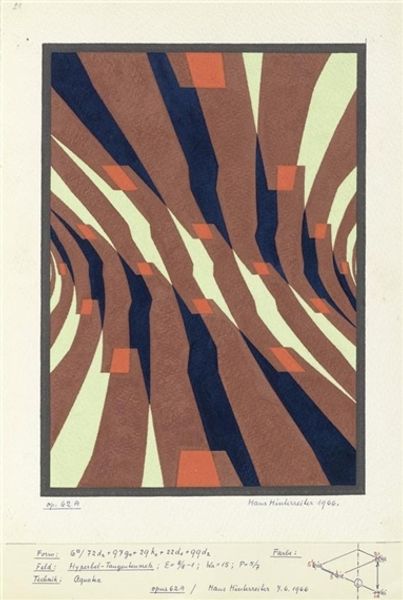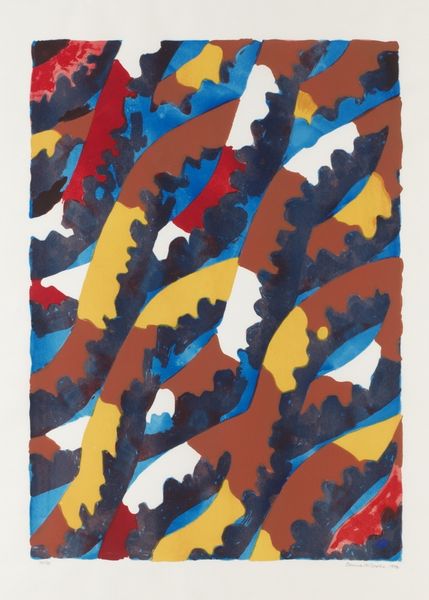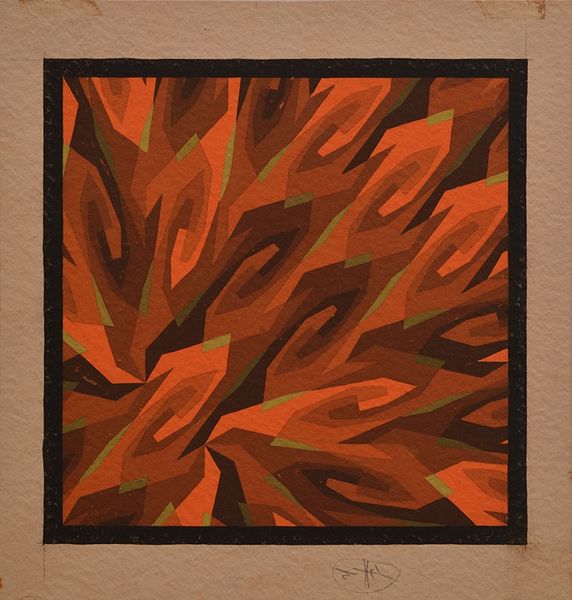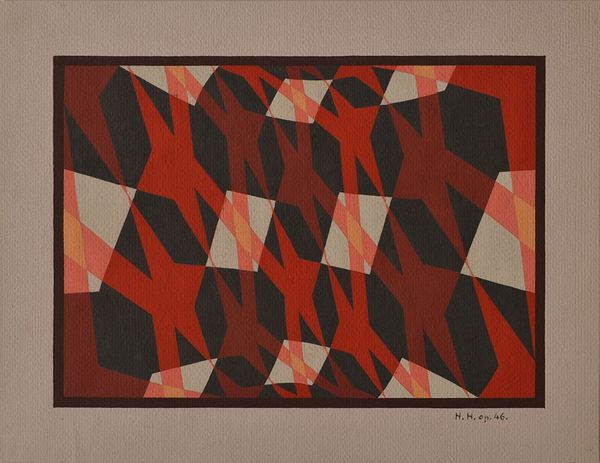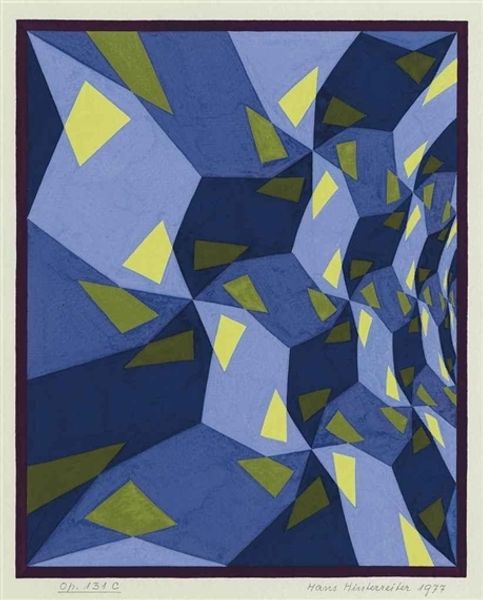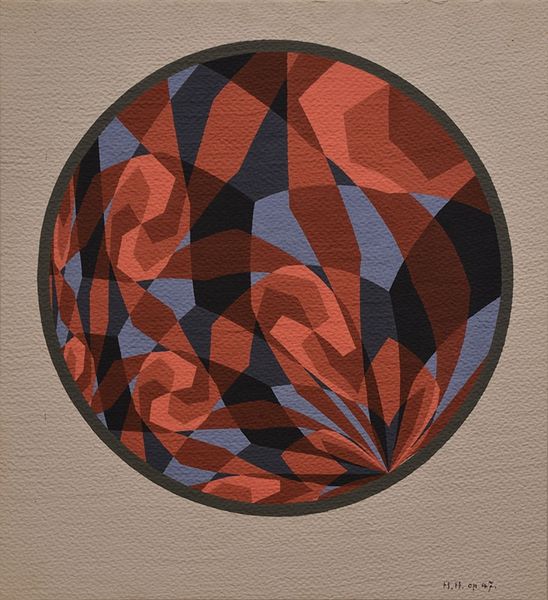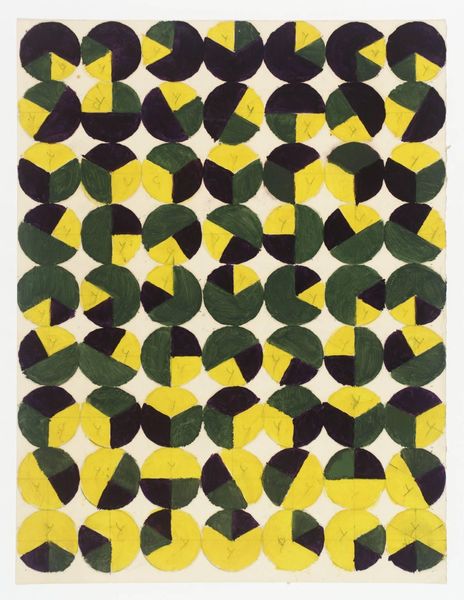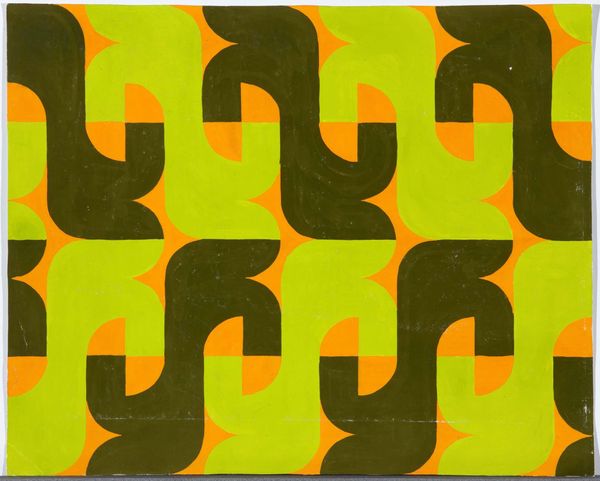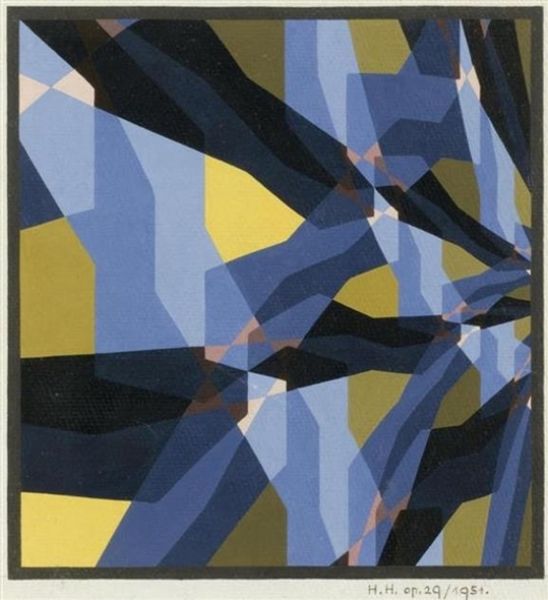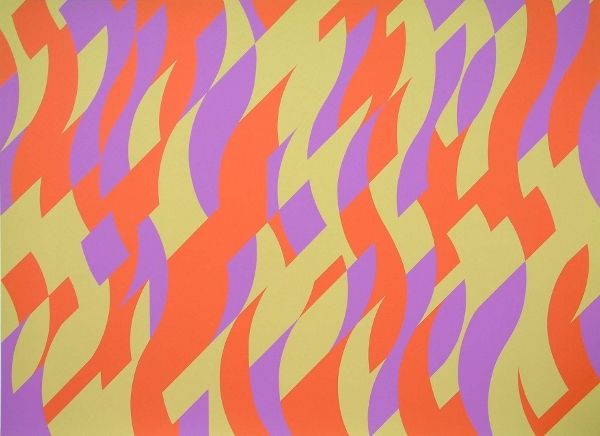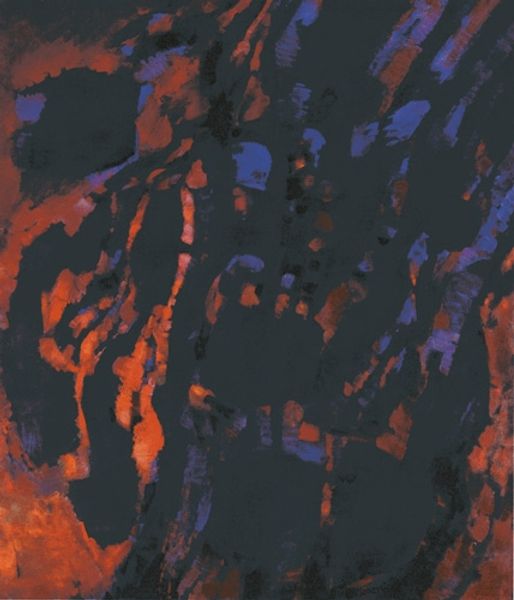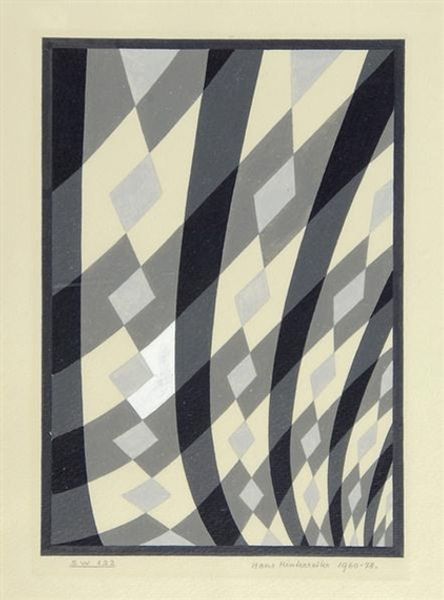
#
concrete-art
#
non-objective-art
#
pop art
#
geometric
#
abstraction
Copyright: Hans Hinterreiter,Fair Use
Curator: Hans Hinterreiter’s “Opus 114,” created in 1960, presents a fascinating example of Concrete Art's pursuit of non-objective aesthetics. Editor: It’s quite visually arresting! The interplay of those jagged, geometric shapes creates a sense of dynamic tension. It almost feels like I’m looking into a kaleidoscope, the pattern spiraling in a potentially endless loop. Curator: Indeed. Hinterreiter, working within a historical context of geometric abstraction gaining momentum across Europe, rigorously pursued a system of color and form based on mathematical relationships. He really pushed for objective, planned compositions. Editor: It's true that there's planning evident in this. What catches my attention is the handcrafting, the texture of what appears to be paint on a physical surface, resisting the perfect flatness that this mathematical impulse might suggest. Were such works machine made? I wonder about the tools he would have employed, the labor involved... Curator: His adherence to mathematical rules definitely placed his art into a system, or what we might even call, at this distance, an algorithm, setting boundaries. While claiming objectivity, it mirrors broader interests among mid-century artists grappling with ways to create supposedly universal aesthetic languages through non-objective imagery. The rise of consumer culture, design standardization—all of this played a part. Editor: That makes me think of this piece, “Opus 114”, as being about tensions –between control and improvisation, the handmade and the machined look. It appears to me as though flat colors work together almost mimicking light, when of course its all pigment. Are these elements of tension intended? I wonder. Curator: Perhaps these inherent contradictions, between the hand of the artist and the supposed ‘objectivity’ they pursued, speaks to what these artists struggled with amid increasing industrialization and attempts to quantify the unquantifiable, particularly with human perception itself! Editor: Right, art-making as a microcosm for a larger societal negotiation with shifting production methods and cultural values... Well, seeing the artwork with that tension in mind opens it up to further conversations. Thank you. Curator: And thank you. Considering Concrete Art in terms of social tensions rather than just pure form offers an entry into its continuing relevance for contemporary audiences.
Comments
No comments
Be the first to comment and join the conversation on the ultimate creative platform.
